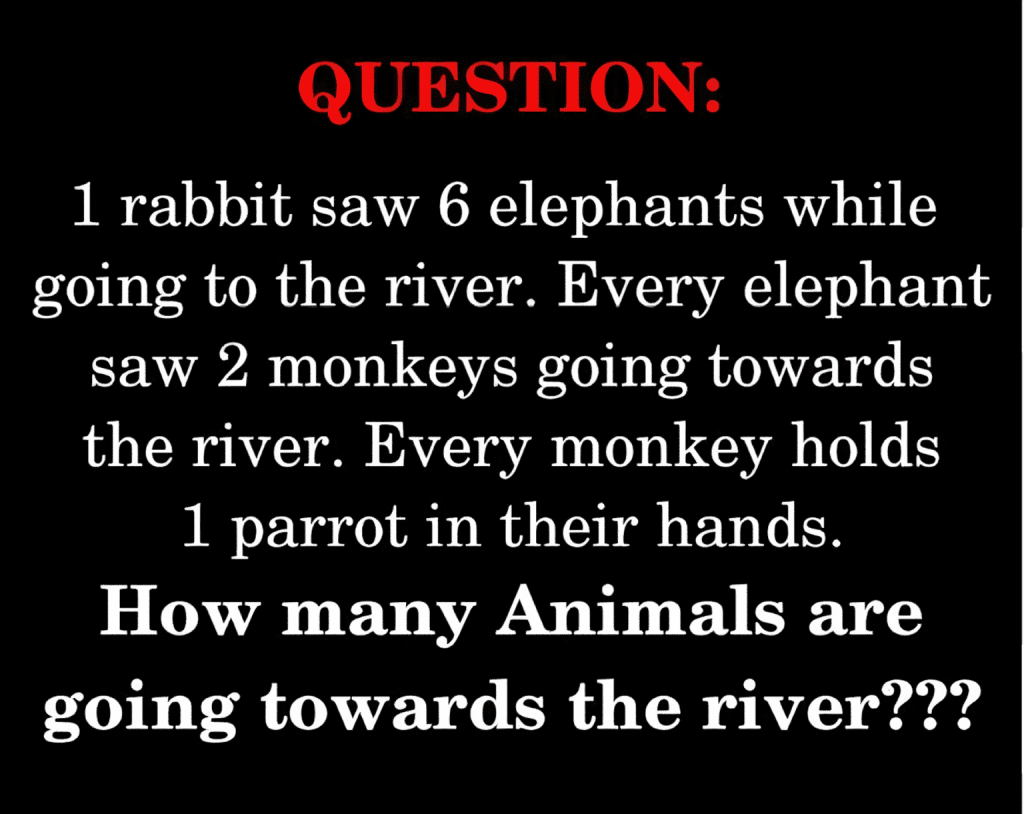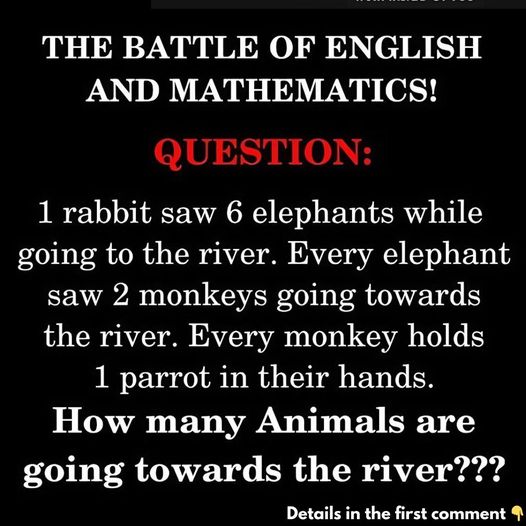Are you ready to have your brain cells fried by what seems like a simple math riddle? Picture this: a rabbit, some elephants, and a motley crew of confused monkeys. Now, this isn’t a scene out of some whimsical animated movie. No, it’s a setup for a riddle that’s making the internet collectively groan and laugh in frustration. Let’s dissect this head-scratcher and see if we can pry out the hidden logic.
This deep dive will unravel the clever trickery of a puzzle that’s caught many off guard. Whether you’re a math whiz or just someone who likes a good old-fashioned brain workout, brace yourself. This riddle isn’t just about numbers; it’s about language deceptively used to twist facts. Let’s get our magnifying glasses and deerstalker hats ready!

Before the fireworks of frustration start, let’s set the stage for our story of a rabbit, six elephants, and a couple of monkeys. Clear your tables, folks, because you’re going to want to track every bit of this delightful chaos. Ready? Let’s dive in.
Our riddle kicks off with: “1 rabbit saw 6 elephants while going to the river.” Seems tame enough, right? A rabbit trotting along, minding its own business, happens upon a sextet of elephants. File this under ‘normal day in fairy tale land.’
But, oh, the plot thickens as if it were a cheap thriller novel. The riddle continues: “Every elephant saw 2 monkeys going towards the river.” Here’s where the English language—with all its sneaky, slippery nuances—comes into play. Are we talking twelve separate monkeys here, one spotted by each elephant (6 elephants times 2 monkeys each = 12 monkeys)? Or are these elephants having a shared vision of the same two monkeys? Mind-blowing, right?
Your initial reaction might be to multiply like a panicked cashier at a closing store sale. Six elephants, each seeing two monkeys—surely twelve monkeys, right? Slow down there, Rain Man. It simply says “Every elephant saw 2 monkeys going towards the river.” This could very well mean that the elephants, bless their sizable hearts, all gawked at the same two poor monkeys.
We’re not even done yet. The riddle wraps up with the line: “Every monkey holds 1 parrot in their hands.” Quick maths: two monkeys, hence two parrots. What are they conspiring about on their way to the river? No matter, stay focused.
Bingo! How many critters are heading to the river? Let’s line them up:
1 rabbit.
2 monkeys.
Each monkey grasping 1 parrot: 2 parrots.
That gives you a total of five animals moving towards the river, and there, ladies and gents, is your answer.
Why is this riddle so insidiously clever?
This riddle is like that unassuming person at a party who floors everyone with an offhand comment. It appears simple but cleverly maneuvers around your brain’s expectations. The genius is in its language; it exploits the ambiguity of phrases like “every elephant saw 2 monkeys,” tricking you into multiplying instead of recognizing the possibility of shared sightings.
It’s these subtle twists that elevate an ordinary riddle to the level of a brain-teaser legend. The real challenge isn’t just the math—it’s navigating the maze of implications in a way that isn’t immediately obvious. Oh, how English excels at leading the unwary astray!
In the final analysis, this rabbit-elephant-monkey-parrot conundrum stands as a brilliant example of why we should never take things at face value. It beckons us to look closer, think deeper, and not get bamboozled by what looks plainly written.
The next time you stumble upon a riddle that seems too simplistic, remember this saga. Don’t be scared to dive into the whirlpool of words and numbers. Who knows what secret logic awaits to be uncovered? Let’s keep those proverbial magnifying glasses at the ready—it’s a wild world of riddles out there!






